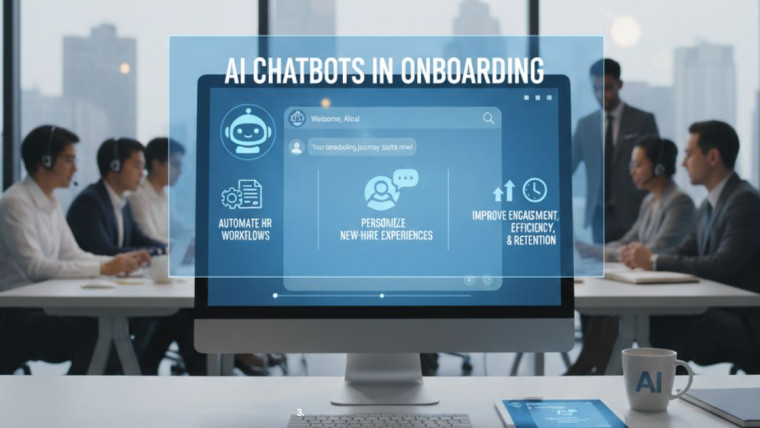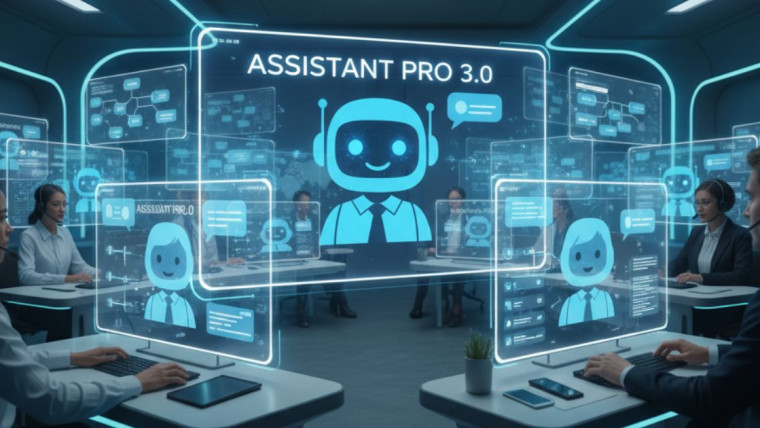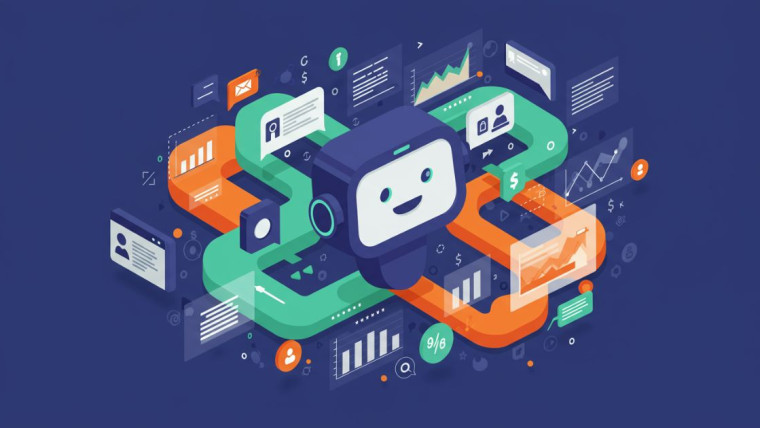Millions of people worldwide navigate digital spaces with disabilities that can make standard interfaces challenging or impossible to use. When businesses deploy AI chatbots without considering accessibility, they inadvertently exclude a significant portion of their potential audience. This creates barriers where there should be bridges.
The global disability community represents over one billion people—a market with an estimated spending power of $13 trillion annually. Yet many organizations continue to design conversational AI systems that work only for users with typical abilities. This oversight isn’t just ethically problematic; it’s a missed business opportunity.
Accessible conversational AI represents more than compliance with regulations like the Americans with Disabilities Act or Web Content Accessibility Guidelines. It’s about creating digital experiences that welcome everyone, regardless of their physical, cognitive, or sensory abilities. When chatbots are designed with inclusivity from the ground up, they become more intuitive and user-friendly for all customers.
This comprehensive guide explores the principles, techniques, and best practices for designing AI chatbots that serve every user effectively. You’ll discover how to identify accessibility barriers, implement inclusive design features, and create conversational experiences that truly work for everyone.
Understanding Accessibility in Conversational AI

Accessibility in chatbot design means ensuring that people with various disabilities can interact with your AI system effectively. This includes users who are blind or have low vision, those who are deaf or hard of hearing, people with motor disabilities that affect their ability to type or navigate, and individuals with cognitive disabilities that impact how they process information.
Traditional chatbot interfaces often assume users can see visual elements, hear audio cues, use a mouse or touch screen with precision, and process complex information quickly. These assumptions create significant barriers for millions of potential users.
Screen reader-friendly chatbots represent just one aspect of inclusive design. A truly accessible chatbot must work across different assistive technologies, support various input methods, and present information in ways that accommodate different cognitive processing styles.
The challenge lies in recognizing that disability exists on a spectrum. Some users may have temporary impairments—like a broken wrist that makes typing difficult—while others navigate permanent conditions. Effective inclusive chatbot design accounts for this diversity without creating separate, segregated experiences.
Common Accessibility Barriers in Current Chatbot Design
Many existing chatbots create unintentional obstacles for users with disabilities. Visual-only interfaces pose immediate problems for users who rely on screen readers or other assistive technologies. When chatbots use images, icons, or color alone to convey important information, they exclude users who cannot perceive these visual elements.
Audio-dependent features similarly restrict access for users who are deaf or hard of hearing. Voice-enabled chatbots for accessibility must include text alternatives and visual feedback to ensure inclusive participation.
Complex navigation structures frustrate users with cognitive disabilities or those using assistive technologies. Chatbots that require precise mouse movements or multi-step interactions can be impossible to use for people with motor impairments.
Time-sensitive interactions create additional barriers. When chatbots automatically time out conversations or require rapid responses, they disadvantage users who need more time to read, process, or input information.
Poor error handling compounds these issues. When chatbots fail to understand user input, they often provide vague feedback that doesn’t help users correct their approach. This creates particular challenges for users learning to navigate assistive technologies or those with cognitive disabilities.
Core Principles of Inclusive Chatbot Design

Successful accessible conversational AI follows four fundamental principles: perceivability, operability, understandability, and robustness. These align with the Web Content Accessibility Guidelines and provide a framework for inclusive design.
Perceivability ensures that information and user interface components are presentable to users in ways they can perceive. For chatbots, this means providing text alternatives for non-text content, offering captions for audio, and ensuring sufficient color contrast.
Operability requires that user interface components and navigation be operable by all users. Chatbots must be usable via keyboard navigation, provide users enough time to read and use content, and avoid content that causes seizures or physical reactions.
Understandability demands that information and the operation of user interfaces be understandable. This involves using clear, simple language, ensuring predictable functionality, and helping users avoid and correct mistakes.
Robustness means content must be robust enough to be interpreted reliably by a wide variety of user agents, including assistive technologies. Chatbots should work consistently across different devices, browsers, and assistive technologies.
Designing for Visual Accessibility
Users with visual impairments interact with chatbots through screen readers, magnification software, or high-contrast displays. Screen reader-friendly chatbots must structure conversations logically and provide descriptive text for all interactive elements.
Proper heading structures help screen reader users navigate conversations efficiently. When chatbots organize responses with clear headings and logical flow, users can jump between sections or skip to relevant information quickly.
Alternative text for images, buttons, and interactive elements ensures screen readers can convey the purpose and content of visual components. This includes descriptive labels for emoji, clear button descriptions, and meaningful alternative text for any graphics or charts the chatbot shares.
Color contrast requirements extend beyond basic readability. Text must maintain sufficient contrast against background colors, and important information should never rely on color alone. Users with low vision or color blindness need alternative ways to distinguish between different types of content or interactive states.
Font size and spacing considerations affect readability for users with various visual impairments. Chatbots should respect user preferences for larger text and provide clean, uncluttered interfaces that don’t overwhelm users with visual processing difficulties.
Creating Audio-Accessible Experiences
Voice-enabled chatbots for accessibility must accommodate users who are deaf or hard of hearing while still providing rich conversational experiences. This requires thoughtful integration of visual and audio elements.
Real-time text alternatives for voice interactions ensure that spoken content is immediately available in written form. This goes beyond simple transcription to include contextual information about tone, emphasis, or background sounds that affect meaning.
Visual feedback for audio cues helps users understand when the chatbot is processing their input, encountering errors, or ready for the next interaction. Loading indicators, status messages, and clear visual states replace audio-only feedback.
Sign language support, while technically challenging, represents an important consideration for chatbots serving deaf communities. This might involve integration with video relay services or partnerships with sign language interpretation platforms.
Captioning for multimedia content ensures that any videos, audio clips, or interactive media shared by the chatbot remain accessible to users with hearing impairments.
Accommodating Motor Disabilities
Users with motor disabilities may have difficulty with standard input methods like typing, clicking precise targets, or using touch gestures. Inclusive AI interfaces must provide alternative interaction methods and flexible input options.
Keyboard navigation support ensures that all chatbot functions are accessible without a mouse or touch input. This includes logical tab order, visible focus indicators, and keyboard shortcuts for common actions.
Voice input alternatives allow users with typing difficulties to interact naturally with chatbots through speech recognition. However, these systems must account for users with speech impairments by offering multiple recognition engines and customizable sensitivity settings.
Adjustable timing features accommodate users who need more time to read, process, or respond to chatbot prompts. This includes extended session timeouts, pauseable interactions, and user-controlled pacing.
Large touch targets and flexible interaction areas help users with limited motor control successfully navigate touch-based interfaces. Chatbots should avoid requiring precise gestures or small button presses.
Supporting Cognitive Accessibility
Cognitive disabilities encompass a wide range of conditions that affect memory, attention, language processing, and executive function. Designing inclusive chatbots requires understanding how these differences impact user interactions.
Clear, simple language forms the foundation of cognitive accessibility. Chatbots should avoid jargon, use familiar words, and present information in short, digestible chunks. Complex concepts should be broken down into step-by-step explanations.
Consistent navigation and predictable interactions reduce cognitive load for all users. When chatbots maintain consistent button placement, use familiar interaction patterns, and provide clear expectations for each step, users can focus on their goals rather than learning new interface conventions.
Memory support features help users who may have difficulty retaining information across longer conversations. This includes conversation summaries, easy access to previous exchanges, and clear reminders of the current context.
Error prevention and recovery systems should be especially robust for users with cognitive disabilities. This means providing clear feedback about input format requirements, offering suggestions for corrections, and maintaining patience through multiple attempts.
Technical Implementation Strategies
Building accessible chatbots requires careful attention to the underlying technical architecture. Semantic markup ensures that assistive technologies can properly interpret and navigate chatbot interfaces. This includes appropriate HTML elements, ARIA labels, and structured data.
API design considerations affect how chatbots integrate with assistive technologies. Developers should prioritize standard web technologies, ensure keyboard accessibility, and test compatibility with popular screen readers and other assistive devices.
Responsive design principles ensure chatbots work effectively across different devices and screen sizes. Users with disabilities often rely on specialized hardware or software configurations, so flexibility in presentation becomes crucial.
Progressive enhancement allows chatbots to provide basic functionality even when advanced features aren’t supported. This ensures that users with older assistive technologies or limited bandwidth can still access core services.
Testing with assistive technologies should be integrated throughout the development process. This includes automated accessibility testing tools, manual testing with screen readers and other assistive devices, and user testing with people who have disabilities.
User Testing and Feedback Integration
Authentic accessibility testing requires input from users with disabilities. Recruiting diverse test participants ensures that chatbots work for real users rather than theoretical scenarios.
Testing methodologies should accommodate different communication styles and technical proficiency levels. Some users may need extra time, alternative communication methods, or assistance with test setup while still providing valuable feedback about the chatbot experience.
Feedback collection systems must themselves be accessible. This means providing multiple ways to share input, using clear language in feedback forms, and ensuring that users can easily contact support if they encounter accessibility barriers.
Iterative improvement processes should prioritize accessibility fixes alongside other development priorities. Regular accessibility audits and user feedback sessions help identify emerging barriers and ensure continued inclusive functionality.
Chatbot Accessibility Guidelines and Standards
Current accessibility standards provide important frameworks for inclusive chatbot design. The Web Content Accessibility Guidelines (WCAG) offer detailed technical requirements, while the Americans with Disabilities Act and similar international laws provide legal context.
Industry-specific guidelines are emerging as conversational AI becomes more prevalent. Healthcare, education, and government sectors often have additional requirements that chatbots must meet to serve their populations effectively.
Compliance documentation helps organizations understand their obligations and track progress toward accessibility goals. This includes accessibility statements, testing reports, and remediation plans.
International perspectives on accessibility vary, but the core principles remain consistent. Organizations serving global audiences should understand regional requirements while building chatbots that exceed minimum standards.
Future Considerations for Accessible AI

Emerging technologies present both opportunities and challenges for chatbot accessibility. Artificial intelligence advancement may enable a more sophisticated understanding of user needs, but new interface paradigms require careful accessibility consideration.
Machine learning applications could personalize chatbot interactions based on individual accessibility needs. This might include automatically adjusting language complexity, providing preferred input methods, or recognizing when users need additional support.
Integration with emerging assistive technologies will expand possibilities for inclusive interaction. Brain-computer interfaces, advanced eye tracking, and gesture recognition systems may offer new ways for users with disabilities to communicate with AI systems.
Regulatory evolution continues to shape accessibility requirements. Organizations should stay informed about the changing legal landscape while focusing on inclusive design principles that transcend specific compliance requirements.
Building an Inclusive AI Future
Creating AI chatbots for accessibility represents more than technical implementation—it’s a commitment to digital equity and inclusive innovation. When organizations prioritize accessibility from the beginning of chatbot development, they create more robust, user-friendly systems that benefit everyone.
The investment in inclusive chatbot design pays dividends through expanded market reach, improved user satisfaction, and reduced support costs. Accessible chatbots often perform better for all users because they’re designed with clarity, flexibility, and user needs in mind.
Moving forward, the goal should be seamless inclusion rather than accommodation. The most successful accessible chatbots don’t feel like they’ve been modified for accessibility—they feel like they were designed for everyone from the start.
Consider beginning your inclusive chatbot journey by conducting an accessibility audit of existing systems, researching your users’ diverse needs, and partnering with disability community organizations. The path to truly accessible conversational AI requires ongoing commitment, but the result is technology that genuinely serves all users with dignity and effectiveness.








Chatbots for Customer Retention: How AI Improves Loyalty and Reduces Churn
Transforming Employee Onboarding with AI Chatbots: A Step-by-Step Guide
Emergency Response Chatbots: Revolutionizing Crisis Management with AI
Revolutionizing Recruitment: How Chatbots Streamline Hiring Processes and Elevate Talent Acquisition